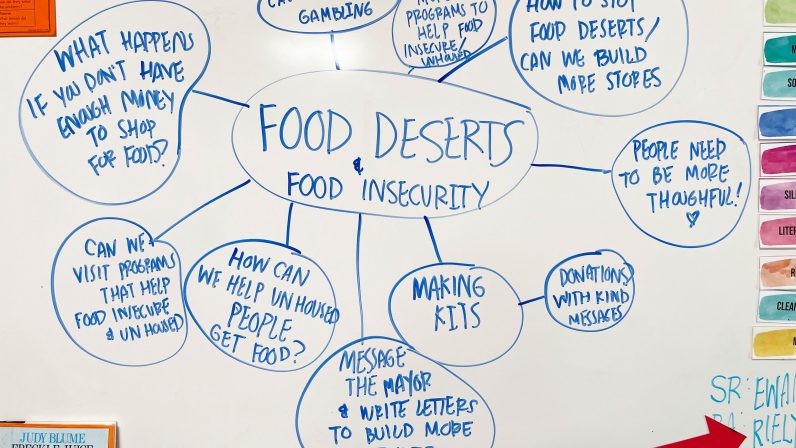For eleven years I taught first and second graders. I believe it was some of my best work as a teacher that ultimately resulted with years of memorable teaching. In fact, I’m still friends with many of my students and their families from that era. Looking back, it was my most prolific time as a writer. During those years I published five books, all of them inspired by the liveliness of working with first and second graders. This past week I dipped back into the first and second grade world.
To help support the class in their teacher’s absence, I spent the whole week surrounded by budding writers, readers, artists, and scientists. I was also able to witness a highly skilled student teacher, on the verge of beginning her teaching career. The week reminded me what I’ve always loved about this age group and why I chose to be a teacher. One of the highlights of the week was watching the student teacher give a lesson on vitamins and minerals as part of our nutrition week. The lesson was well organized, with classroom technology used to project a video. A clipboard was in each child’s hands. The children were given a sheet with six sections. As each vitamin or mineral was presented, they were invited to “take notes” by drawing a picture and labeling it. Engagement was high as they asked questions and made comments. One student said, “Vitamins are little circles that eat the germs.” Later in the conversation that evolved from talking about vitamins and minerals, the same child said, “If we hurt Nature, the forces of Nature will hurt us!” Along with experiencing the excellent teaching and learning of the first and second graders, I experienced the food study with them by tasting their delicious homemade hummus!
As promised last week, in addition to what I wrote about the first and second graders, I wanted to share what the older classes are doing for our food study. PreK is keeping it simple this year by focusing on colors of foods and how they affect the human body. They have talked about how orange foods help us see in the dark, thanks to Vitamin A. Purple foods have antioxidants that help our brains be strong. They have been identifying foods and sorting them out according to color on large graphs made with tape on the carpet.
In Kindergarten, students have used resources from myplate.gov to learn about balanced nutrition and healthy eating. They’ve sorted out food types, and learned about grains by cooking pancakes in class and making tortillas with Diane for Spanish. The class has graphed vegetables and fruits, and examined lunches to tally certain foods each day. Their work successfully blended many subject areas in yummy ways.
Our oldest Seeds have made smoothies and cookies to test out their culinary skills. The children requested experiences with foods from their own cultural backgrounds. In writing they have focused on poems about their favorite foods with an illustrated piece of art to go with it. And most importantly, they’ve begun a conversation about food deserts and food insecurity. Still in the process of brainstorming ways to make a difference, they will undoubtedly pursue emerging work from their food study long into the future. In many ways, what has been sparked this week resides in the heart of the Seed’s social justice intention. It’s about service and using our energy, voices, and resources to manifest equity on Planet Earth.

